Long runs — crucial for half marathons, marathons, and ultras — take a lot of time and effort. Don’t hurt their effectiveness by running them at the wrong pace. Let’s talk about pacing the long run, from the paramount long slow distance (LSD) pace to correctly adding in faster miles.
This is Part Two of a three-week series. Last week we talked distance and how to build your long run. Check it out here.
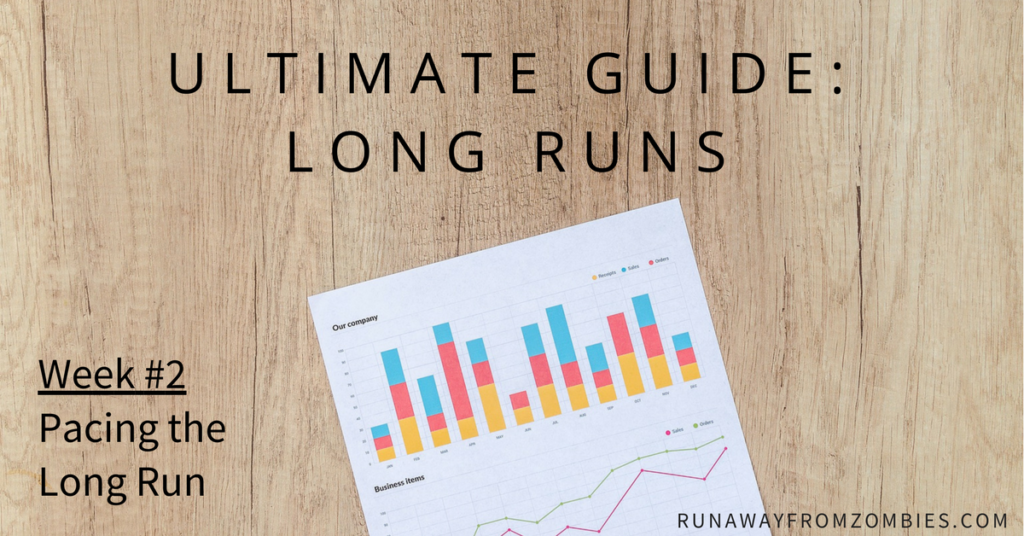
Ultimate Guide: Pacing the Long Run
LSD: Long, Slow Distance
The long slow distance is crucial for training for long distance races. Running at conversational, aerobic pace increases your endurance, strengthens your cardiovascular and respiratory systems, primes your energy systems, and basically builds a strong running engine that will support you for hours… days even.
The long slow distance is run at an easy to easy-moderate pace. Your easy pace is a wide range varying day-to-day. It can swing by as much as 30-40 seconds in either direction. It depends on temperature, terrain, your recovery status from earlier runs, your mood, etc.
Your easy pace is about a minute slower than your marathon race pace, and 1:20 slower than your half marathon race pace. For example, if you have a recent half marathon time of 2:00 hours (9:11 pace), your easy/long run pace will be around 10:35. If you don’t have a relevant race time to use, run at a pace where you can comfortably finish the distance. If you find yourself slowing down in the last few miles or taking walking breaks, start slower next time.
Whether you have a guideline pace or not, pay attention to your breathing and heart rate — don’t press too hard. The distance itself is the training stressor; appreciate the mental training and the time on your feet.
Why would I run that slow?
For those trying to hit a goal time in the marathon or half marathon, it can be frustrating to “run that slow”. But, training runs are not races. They are part of a conditioning series and are only one workout in your week. You have to take into account all your workouts leading up to the long run and all your workouts you plan to do after.
With tapering and rest leading up to your race, you’ll be able to race faster than you’ve trained.
Read more: Pace zones and their benefits

Ultimate Guide: Pacing the Long Run for Advanced Runners
For experienced runners with high mileage bases, covering the distance of a long run might not faze them. I experienced that first hand this year. I ran 18 miles on a Saturday and 9 miles on a Sunday with no signs of soreness or fatigue. The distance itself wasn’t stressing. And I still had over two months to train for my marathon.
Rather than piling on excessive miles to make the long run hard, I added intensity to the long run. And I’ll tell you that it doesn’t take much. Here are four ways to add difficulty to the long run, if the distance is just not enough.
Race Pace
Finish your run with miles at goal race pace. For shorter long runs, you can do a few warm up miles and complete the majority of the run at race pace. For longer long runs, do the majority of the run at easy pace to tire your legs, then test yourself with a few miles of race pace at the end. You’d be surprised what 3-5 fast miles can do.
Read More: Long Run + Race Pace for half marathoners
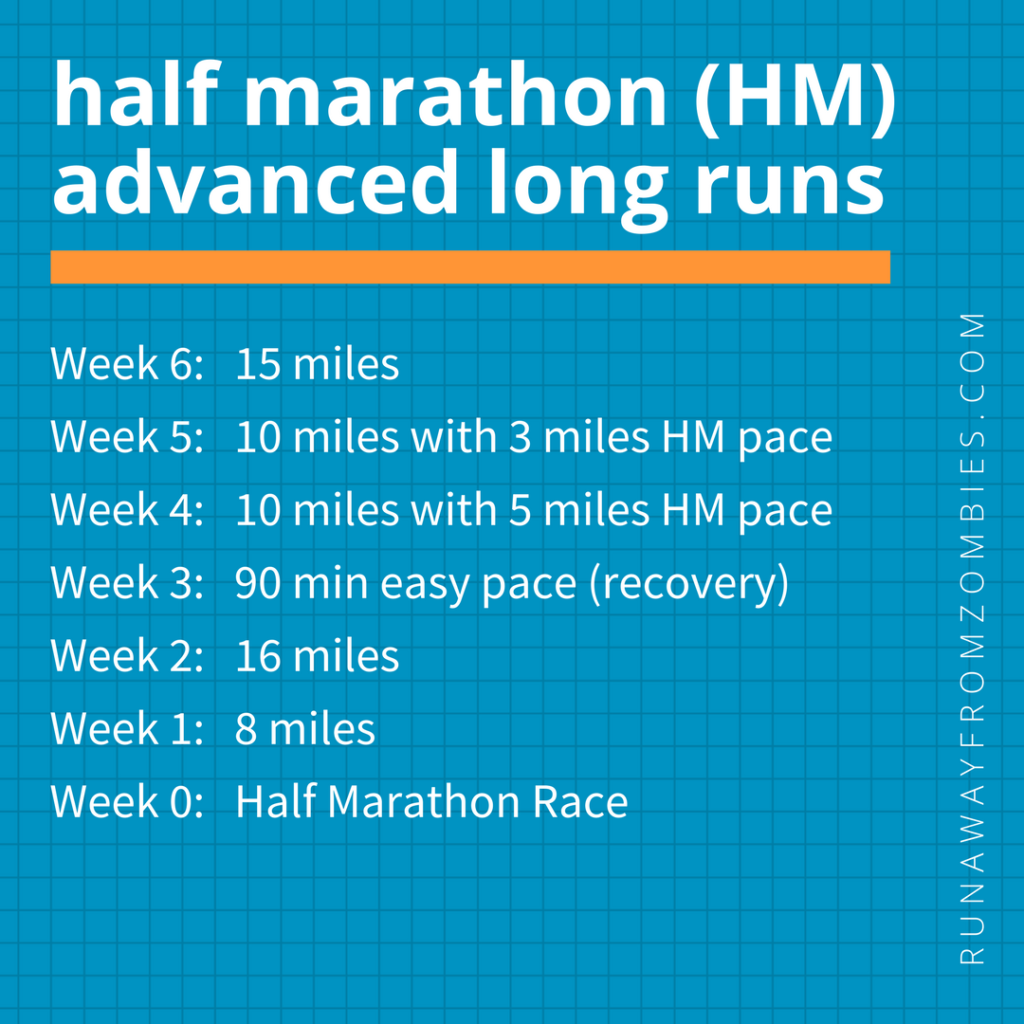
Fartlek
Take the middle miles of your long run and run a fartlek workout. You can run it unstructured — fast for a few minutes, back to easy pace, medium for a mile, etc. Or you can set up some structure to it. Either way, you add variety to the mental monotony of the long run and teach your legs to change gears during a long distance, helpful for passing other runners or picking it back up after a bad patch.
Read more: Structured fartlek runs
Progression runs
A progression run, where you build speed as the run continues, can be done with marathon pace. After several miles of easy pace, you can speed up by 10 seconds/mile until you reach marathon pace for a mile or a few miles. For shorter long runs, you could even end a bit faster than your marathon pace. This workout will teach you how to push when it’s hard.
Read more: Boost your finish with progression runs
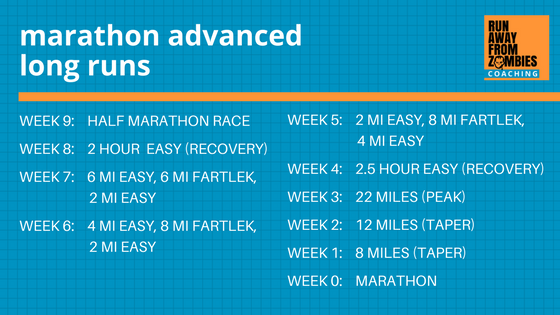
Tempo pace
Are you seriously still looking for more intensity? Well, fine. Sandwich your easy pace long run with lactate threshold pace miles. After a warm up, run cruise intervals about 15 sec/mile faster than marathon pace, then the bulk of your long run, followed by another set of cruise intervals. Running harder in practice, will make your marathon pace feel easier on race day.
Check out the details of this workout on Competitor.
Read more: Tempo runs
One Variable at a Time
Do not increase distance and intensity at the same time. Let me say that again. Do not increase distance and intensity at the same time. That’s why these are advanced workouts. If you’ve never run an 18 miler, now is not the time to add in race pace miles.
Periodization
These advanced runs should be done at the end of your training cycle, right before your pre-race taper. Early in the season prioritize your mileage base and mid-week quality runs. As your long run reaches your greatest distance and your race gets closer, you can add faster miles to increase the difficulty of your long run and fine tune your fitness for race day.
Read more: Macrocycles & Mesocycles
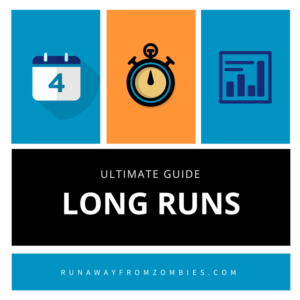
Pacing the Long Run
The easy pace of long runs has a purpose – a great many purposes. Don’t throw them away lightly. Be smart about your pacing in advanced long runs to avoid overexertion and overtraining. The test isn’t the workouts; it’s race day.
If you’re interested in getting a training plan with long runs customized to your experience and goals, check out my plan design services here.
For the last week in the Ultimate Guide to Long Runs series, I’ll answer frequently asked questions concerning the long run and discuss fueling. See you next week!

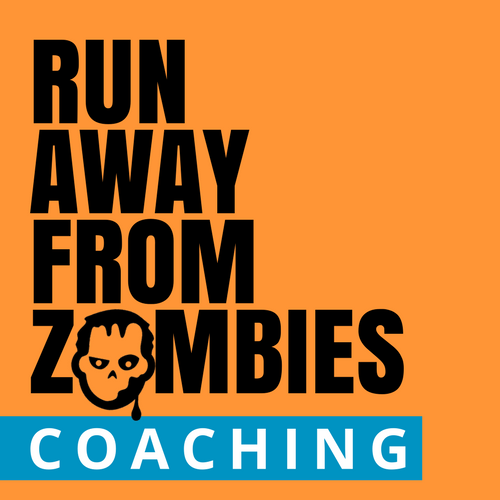


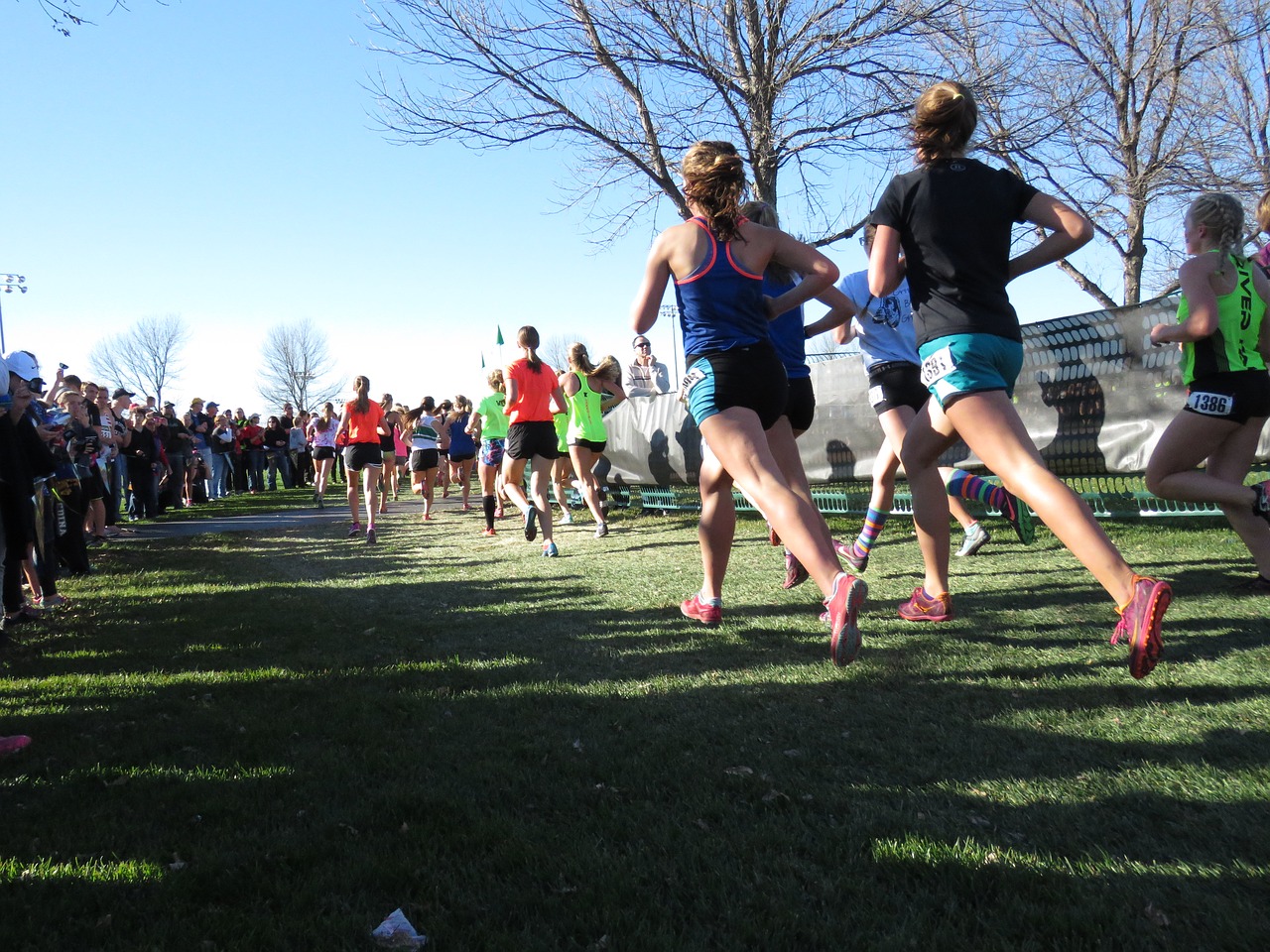
Hey Rebekah, I like this series! Am just starting to build up to a couple summer half marathons then am doing a full marathon in the fall so definitely need to be thinking carefully about all these things.
Thank you for the feedback — Glad the series is relevant and best of luck in your training!